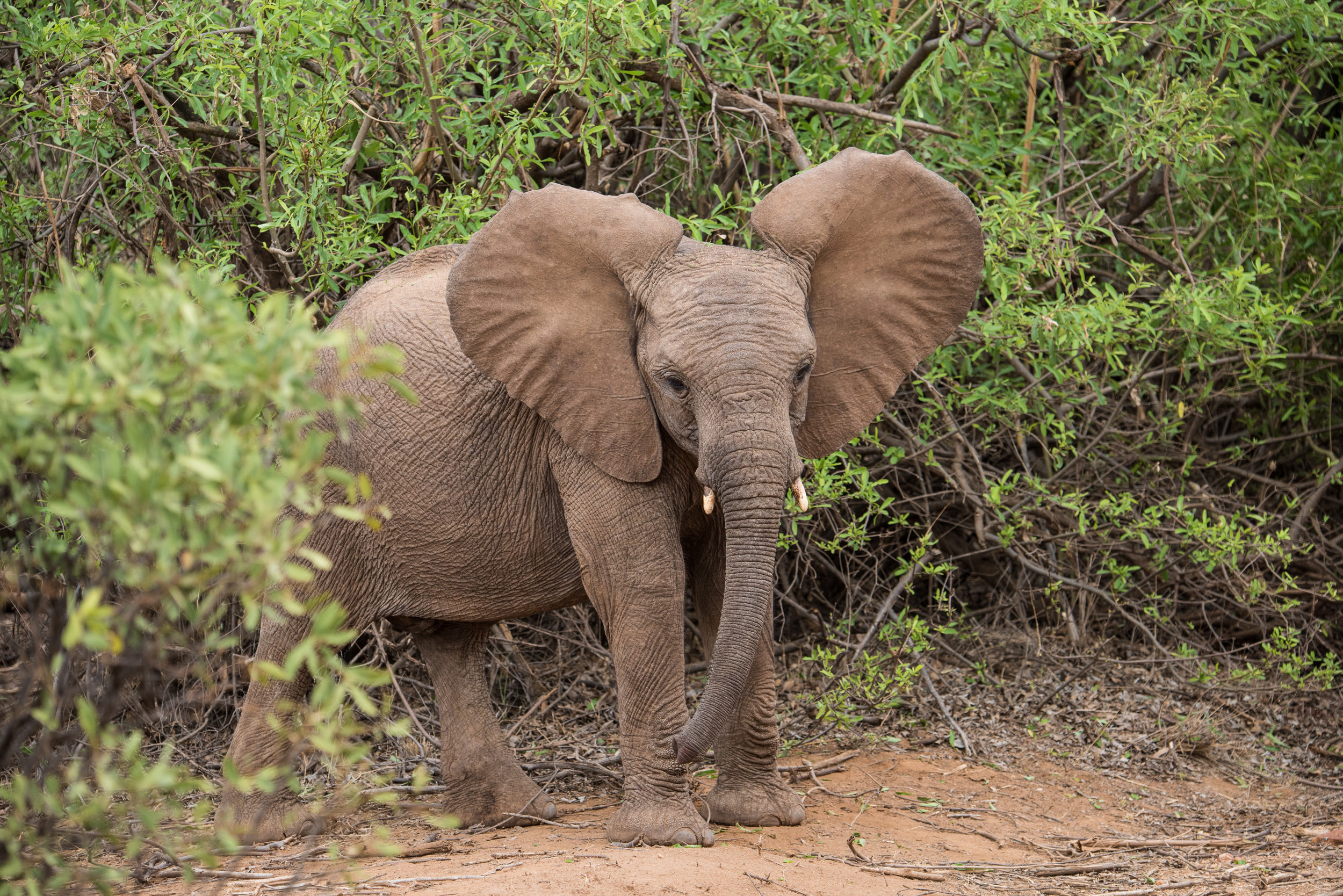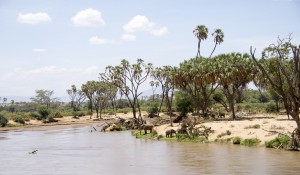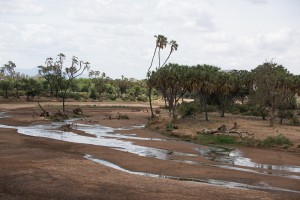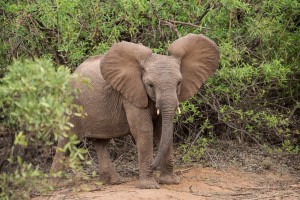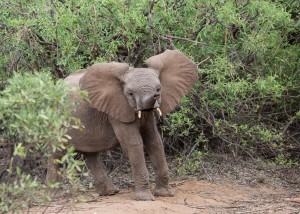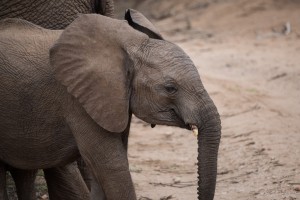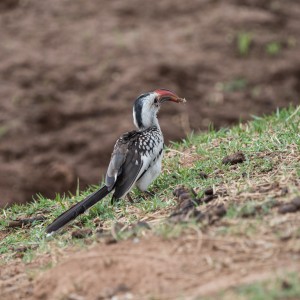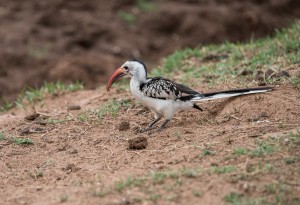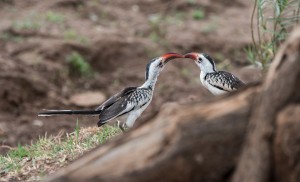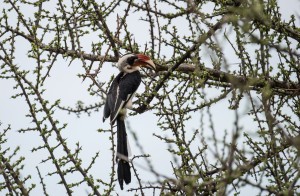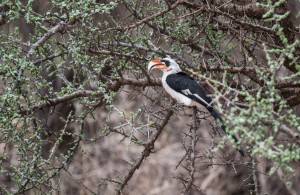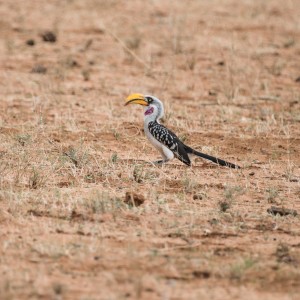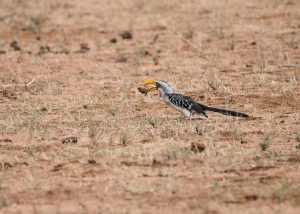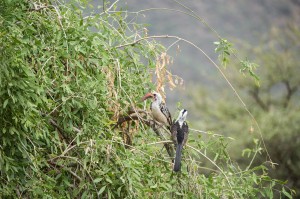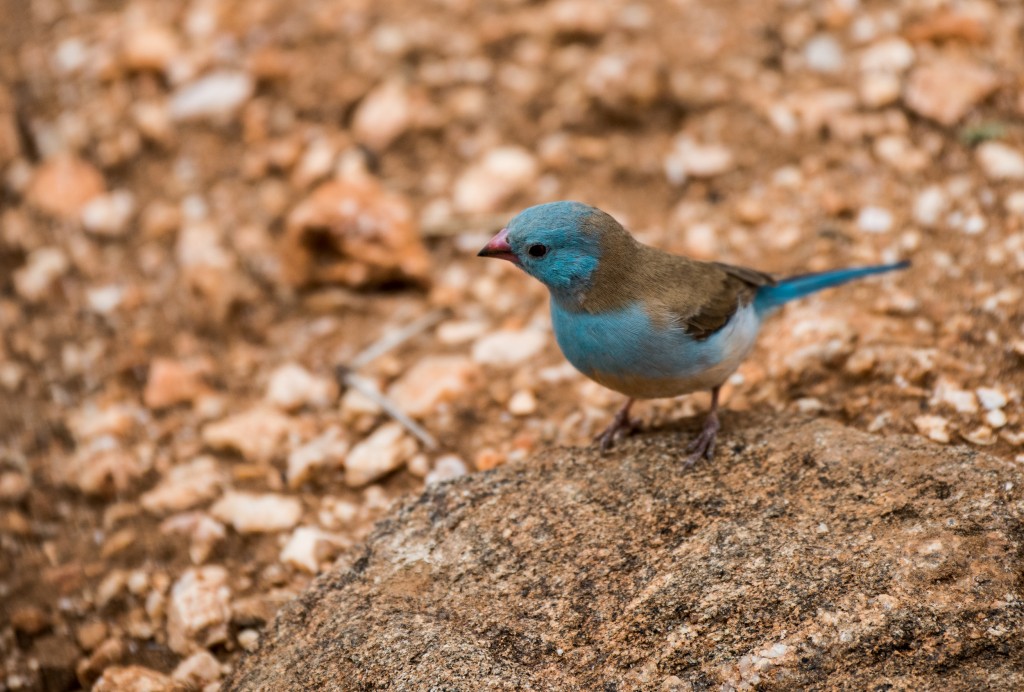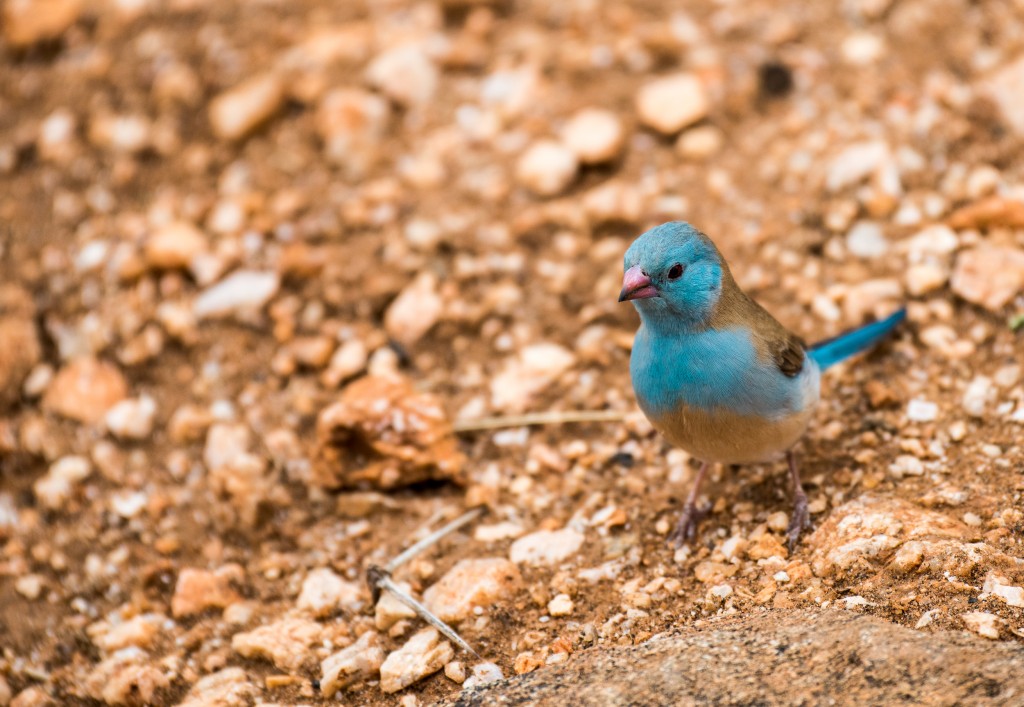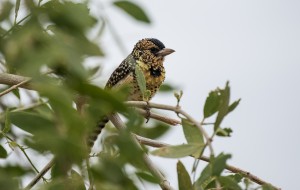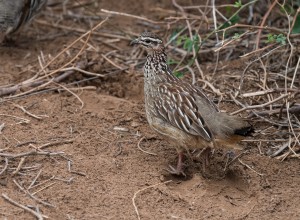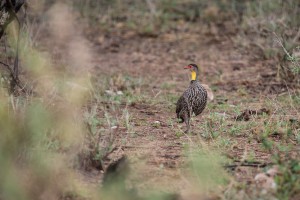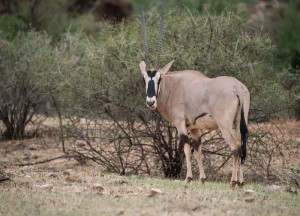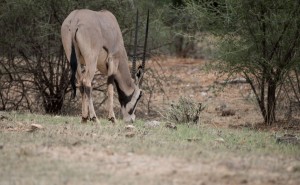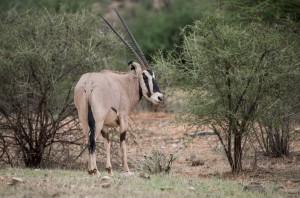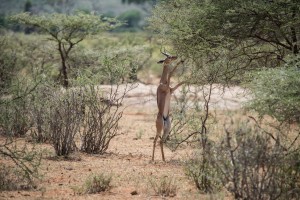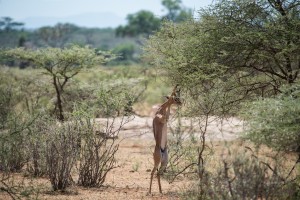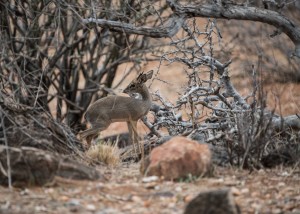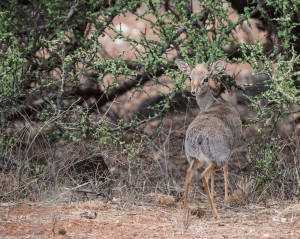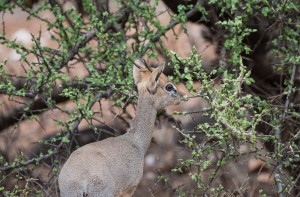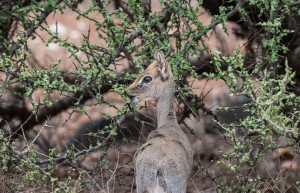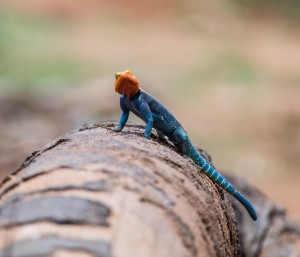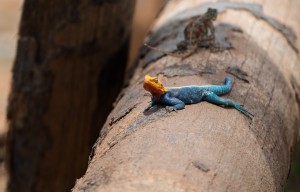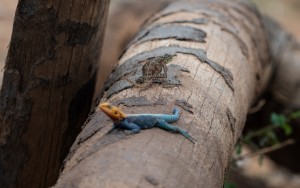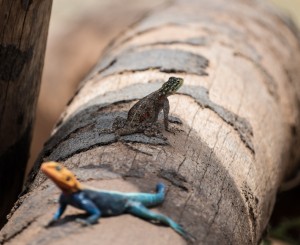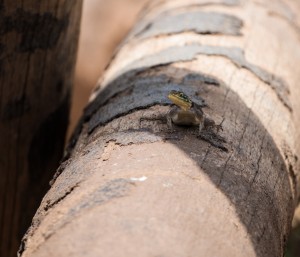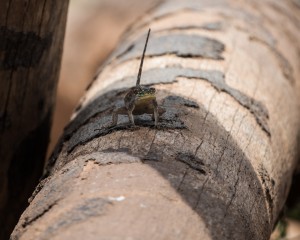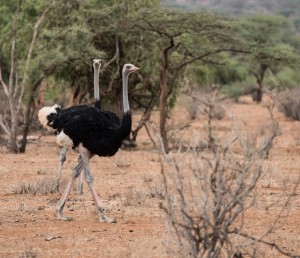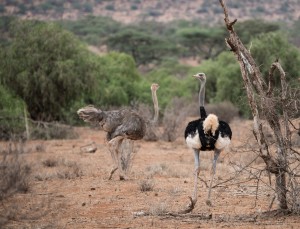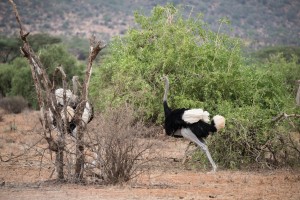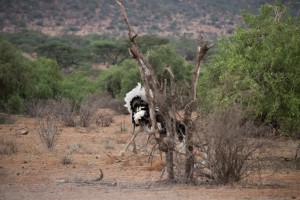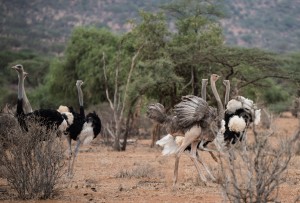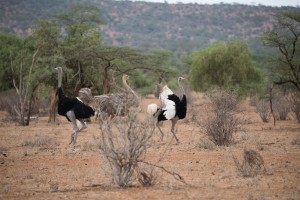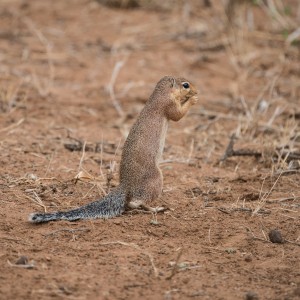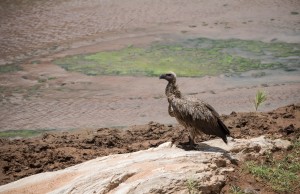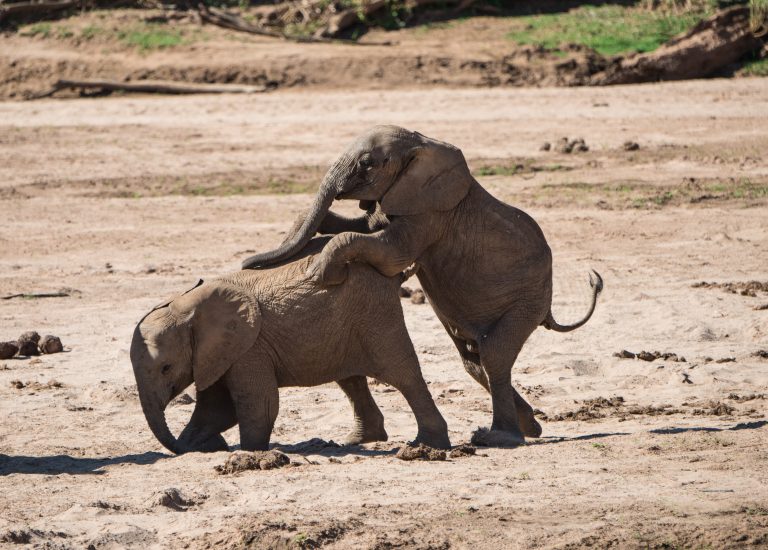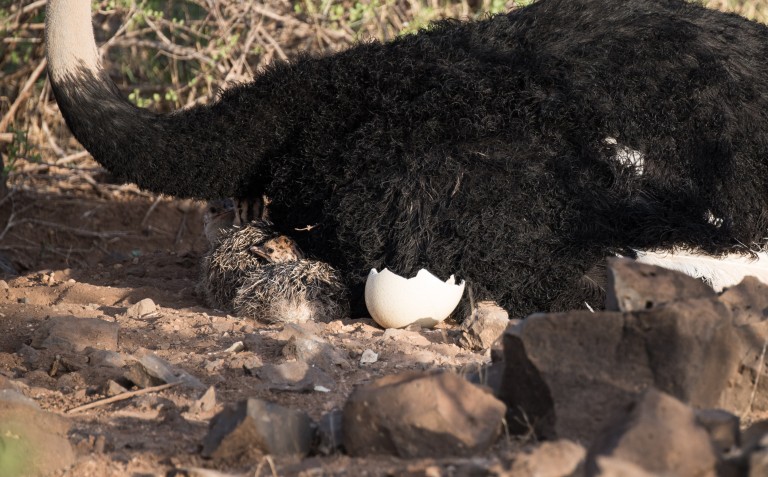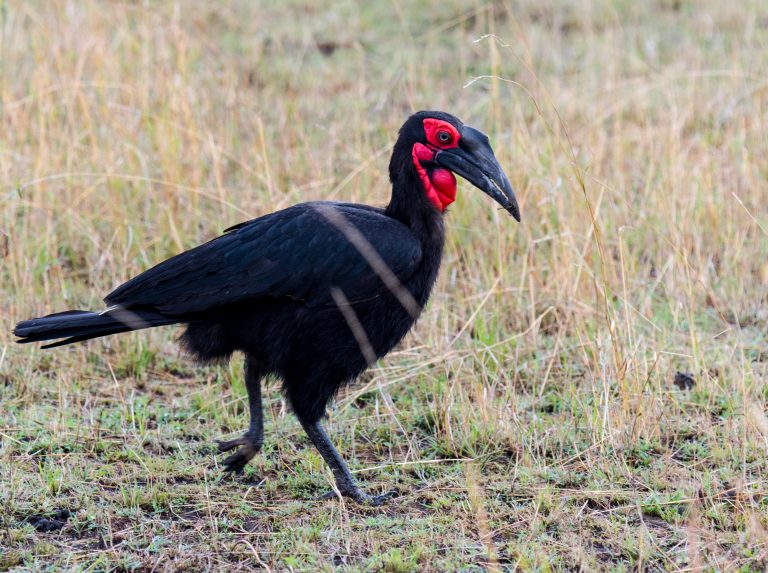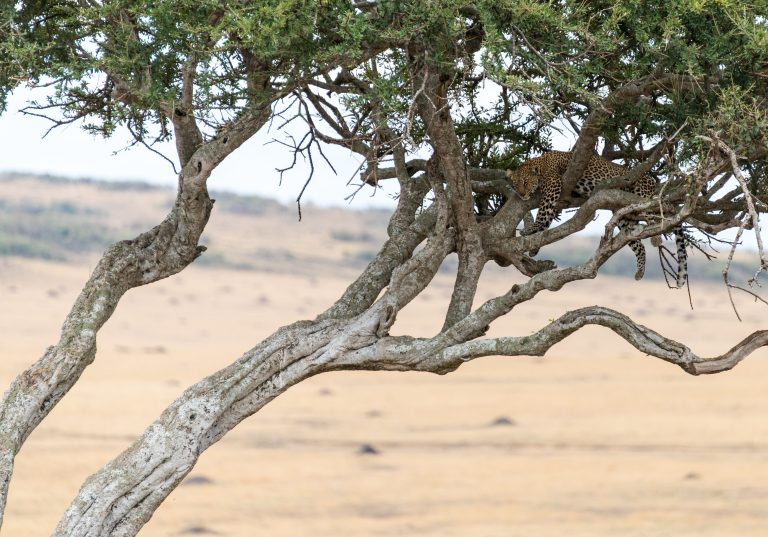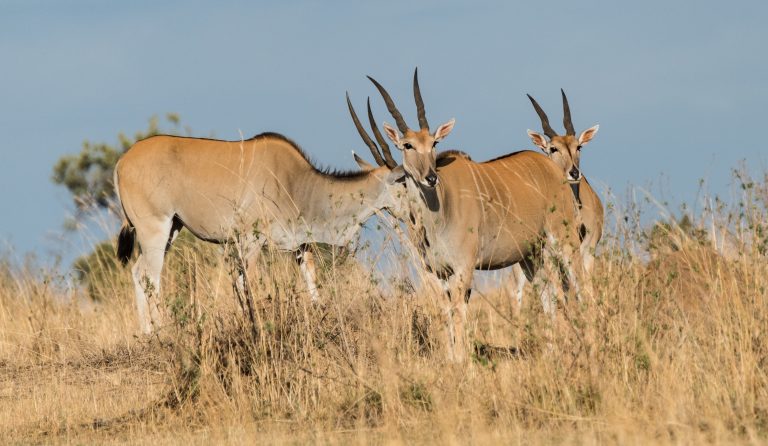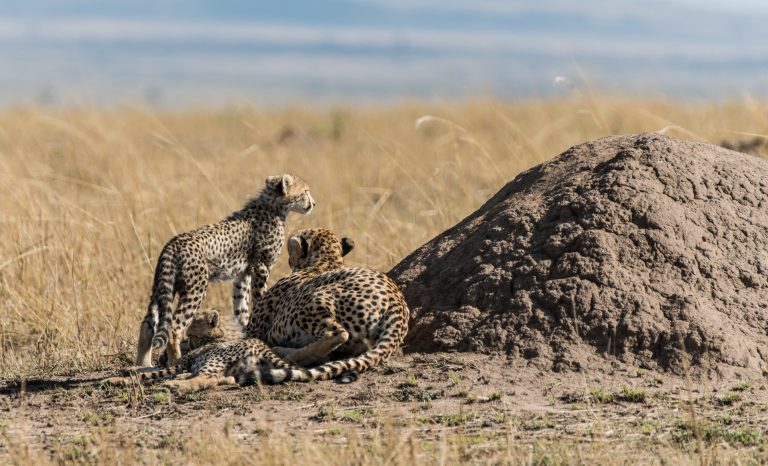First sight of elephants!
The area is always arid but this year the effects of the drought took me by surprise. I have seen the river in full flood and I had seen it very low but never completely dry. These pictures, taken at roughly the same time of year, show the extent of the drought this year. This is the same bend in the Ewaso Ng’iro river in 2013 and 2015 – with and without water!!
The state of the river meant that this year there would be no picturesque photos of elephants playing in the water and crossing the river. I was a little anxious that I might not see elephants at all. That sounds dramatic but my previous experiences had taught me that when the area is dry for long periods of time the elephants leave the park and head off into the hills. They return with the rains. Indeed they time their return for when the rains start to fall. On a previous visit we saw the herds in the distance, the sky was bright blue and cloudless, and the next day the first rains fell!!
So I was delighted when we came across a small breeding herd feeding in the bushes. This young elephant was surprised to see us as it came out of the bushes and initially just swung its trunk before, feeling brave, it flapped its ears and trumpeted at us. We were stationary and not really a threat so it made its way across the road.
The water you can see in the photos of the dry river bed was not going to be enough for the elephants. It is from a permanent spring but was shallow and we saw elephants walking right past it after surveying it with their trunks. They would rather dig in the sand for fresh water than use this … but more of that in later posts.
Around the time of the rains is a good time for seeing birds in Samburu. Often they are starting to nest and courting. Red-billed hornbills are common and you see them in the Mara too. I watched this pair collecting insects and sharing them for quite a while.
I had not noticed on previous visits that there were other varieties of hornbill. It may have been because they are less often seen (or maybe I was less observant!) but on this particular morning my guide managed to point out all three of the types found in Samburu.
The eastern yellow-billed hornbill was very persistent with this large seed pod. It tried swallowing it whole, repeatedly dropping it on the ground and picking it up, and turning it around in its beak. Eventually, however, it did abandon it. I like the red-billed hornbill picture because they seem very ‘close’ and because there is just a hint of the vastness of the space beyond their bush.
Birds are so quick to take off and disappear so it is real treat when I manage to capture something unexpected – like the next two pictures:
This blue-capped cordon-bleu was new for me. The sharp eyed guide saw it close to the vehicle and I was able to fire off a couple of shots and love the results. I grew up with SLR film cameras where you were cautious about how many shots you took both because you might run out of film stock and because of the cost of getting them developed and printed. Old habits die hard! Continuous shooting would guarantee at least a couple of decent shots but I rarely do that. Sometimes I kick myself when I miss a shot because of it. But on the other hand I am really proud when I get a couple of single shots that worked. Not least because it means I did not let my excitement get the better of me! The colours and feather details on this bird are stunning.
Not all the birds are so brightly coloured as the blue-capped cordon-bleu but the detailed markings and unexpected bursts of bright colour are a joy and there is always something to see or watch when the larger game is well hidden.
I think for some visitors the desire to see the predators, elephants, and rhino is overwhelming and it can mean that they miss a lot of the charm of Africa as they rush from place to place. There is something special about sitting still, listening to the sounds of the birds in the bush or watching the francolin or spurfowl scratching in the dirt.
Samburu has some special antelopes and gazelles. The Oryx is sturdy and beautifully marked. They tend to be a bit shy and were often unobliging when I wanted to photograph them! Their horns are spectacular and so long you feel they will get broken off.
By contrast the gerenuk is really delicate and graceful. They can stand on their hind-legs feeding from bushes for long periods of times, using their fore-legs to balance and to pull branches down to their mouths. (read more) At the other extreme you have the tiny Dik-dik. It is hard to get a sense of size from the photos because you usually only have the bushes to compare it with – and they could be any size. It is only about a 35 cm tall – just over the length of a ruler!
It has huge eyes and delicate features and is very, very skittish – dashing into cover when you stop the vehicle engine. Here in Samburu they are a grey brown colour and are well camouflaged. This one appeared to be on its own but they are usually in pairs or family groups of 3 or sometimes 4.
On this game drive we also got to see the smaller creatures still! The male agama lizard is so bright and seems to have such a defiant demeanour. I did not initially see the chameleon sitting behind it. Once again my sharp eyed guide saw it and pointed it out.
The chameleon was almost invisible in the shade and was tiny. I think the agama lizard had the end of its tail missing because it looks rather thick and rounded.
We came across a flock of ostriches. There were several males and a few females. The males were curious about us – but only briefly! Much more important was showing off to the girls. The males chased each other round the bushes, snapping quite aggressively and then fluffing up their feathers – presumably to look bigger!
It seemed to work though as the girls did a bit of displaying of their own.
It had been a busy morning and by now was very hot (although not especially sunny) so it was time to return to camp. On the way back we had two contrasting images. The first was a delightful ground squirrel busy eating a nut. The second was a vulture sitting by what remained of the river.
